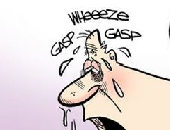“Uncertainty is a fundamental part of business. Major shifts occur without warning, triggered by a single event, or combination of unrelated, contemporaneous events,” said Sanjiv Talwar, Managing Director, Risk Capital & Stress Testing at Bank of Montreal. He was addressing a webinar audience on May 7, 2013 as the first speaker in a panel organized by the Global Association of Risk Professionals (GARP). He summarized the categorization of uncertainty by Courtney et al. in “Strategy Under Uncertainty”, Harvard Business Review.
There is a variety of tools available to help manage the uncertainty, Talwar noted: option evaluation, game theory, pattern recognition, and non-linear dynamical systems. Of greatest interest today are scenario planning and stress testing, which have gained widespread use among Top 100 corporations and regulators on a global scale.
Talwar highlighted that the key to success is careful and thorough implementation. Stress testing is an organizational capability “that involves critical thinking, planning, and analysis.” The process must be “systematic and repeatable.” The data and technology demands are great because “reconciled granular risk data is necessary.” Governance is the fourth component of successful implementation, and as part of transparency it includes reporting templates and enhanced documentation such as those in support of the internal capital adequacy assessment process (ICAAP) and comprehensive capital analysis and review (CCAR).
Stress testing should be embedded in strategy and capital management. “To gain greatest value,” Talwar said, “it must be approached as a critical thinking exercise.” For example, he urged listeners to “consider changes in consumer and corporate behaviour and other knock-on effects,” not just the widely available historical data.
Integrating stress testing into the management framework challenges the “information silos” within an organization. For example, “assumptions must be consistent between Risk and Finance” and this encourages departments to communicate better with each other.
Talwar summarized four issues common to stress testing in different companies. For starters, there is often lack of senior management buy-in, and the stress testing may be seen as an isolated exercise. Second, data and infrastructure limitations often constrain an organization’s ability to identify and aggregate exposures. [Ed. Note: this will be addressed in Part 2 of the webinar.] Third, there are limitations to traditional models. Backward-looking (historical) models are everywhere. Last, the scenario selection may involve scenarios that are too mild, and that overlook the importance of new products.
Stress testing is not a forecasting tool, Talwar emphasized. “It requires the courage to ask, what keeps me awake at night?” Good stress testing will become a management tool to improve strategic direction. In this way, a company can determine if the expected return is commensurate with the amount of risk being taken on. “Stress testing is more than a mechanical quant exercise,” concluded Talwar. “It needs to find a balance between numbers and narrative.” ª
Go to Part 2. ª
The webinar presentation slides can be found at: http://event.on24.com/r.htm?e=589921&s=1&k=E97E15429FDDEE0BCCFB9C7357942060


